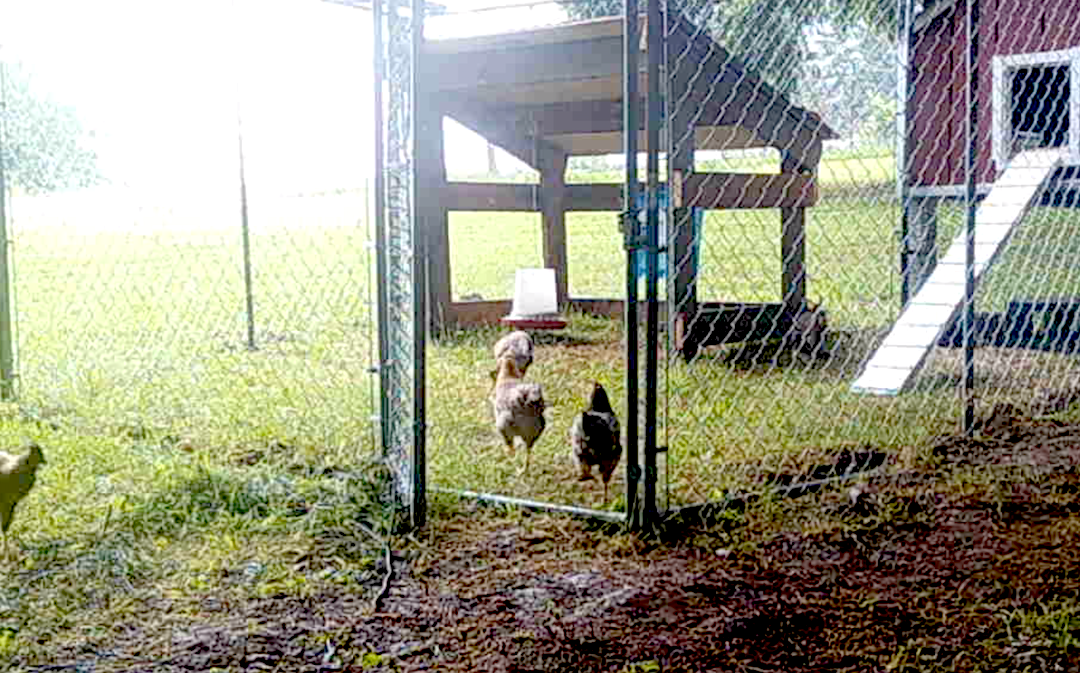The week before Christmas I filled my chicken coop with hens and one rooster. I felt pretty good about myself as I was finally on my way to achieving my goal of having free-range eggs on a daily basis.
The following afternoon, I went up to visit the chickens and noticed that one hen was outside the run. Seeing the rest of the chickens in the run, I made the assumption that our long lost “Caramel Corn” (from the previous batch of hens) had been called in by our rooster.
Both my husband and I were very excited. And so was our bird dog, JacX.
JacX began chasing the chicken as we discussed how to get her into the coop. Our attention wasn’t on the dog or the chicken, as we knew Caramel Corn could fly. Well, apparently, she couldn’t fly as well as we thought. JacX cornered her and killed her.
I was so distraught. How could this chicken live on her own for the past five months and then get caught by JacX in just a few minutes? I even think JacX felt bad as well. It was a sad ending to the “A Chicken’s Way Home” movie.
The next morning, I got the call from my husband: Caramel Corn was up in the front field with our neighbor’s horses and goats. Yes, Caramel Corn lives again!
So, where had this other chicken come from? I couldn’t say for sure, but I assumed it was a neighbor’s chicken. Mostly, I was happy that Caramel Corn was going to live another day.
All was fine until I went up a few days later to clean the coop. To my dismay, I realized that I was missing a hen. I searched high and low, but she was gone.
And now I knew where that free-range hen came from. I still don’t know how she got out, but she did. So, yes, I am down one chicken. And, again, I’m feeling really bad about my chicken mama skills.
Not keeping score really hurt me. If I had been keeping count, I would have known that I had lost a chicken and could have taken steps to address the problem before the instincts of our hunting dog took over.
Not keeping track of the leading indicators in your business can also have drastic consequences. How many times could you have avoided a problem in your business if you had taken steps earlier? That includes things such as declines in revenue, safety issues or losing key personnel who are not feeling appreciated or fulfilled.
The reality is that no matter what plan you set for your business, issues will come up. Small issues left unattended can grow into large issues. If you aren’t tracking your business’s key metrics, or leading indicators, you could find yourself reacting too late, after an issue has impacted business performance.
However, by reviewing your leading indicators on a weekly basis, you will be able to see data and trends that let you know you need to take action.
Don’t have a scorecard? No problem: follow these three steps to develop one.
1. Identify key metrics for each of your departments.
2. Monitor those metrics every week during your leadership team meetings.
3. Take steps once you see a metric trending off track.
To make this even easier, you can request a copy of the scorecard I created that will automatically create graphs for your key metrics.
Now is the time to get yourself and your team aligned on the key metrics that will ensure you launch 2021 on the right foot because I don’t want you to experience anything like the sad ending of “A Chicken’s Way Home.”
P.S. Starting your year with a clear vision and plan to achieve that vision will improve your chances of achieving your goals by 300%. A scorecard makes sure you are staying on track.

